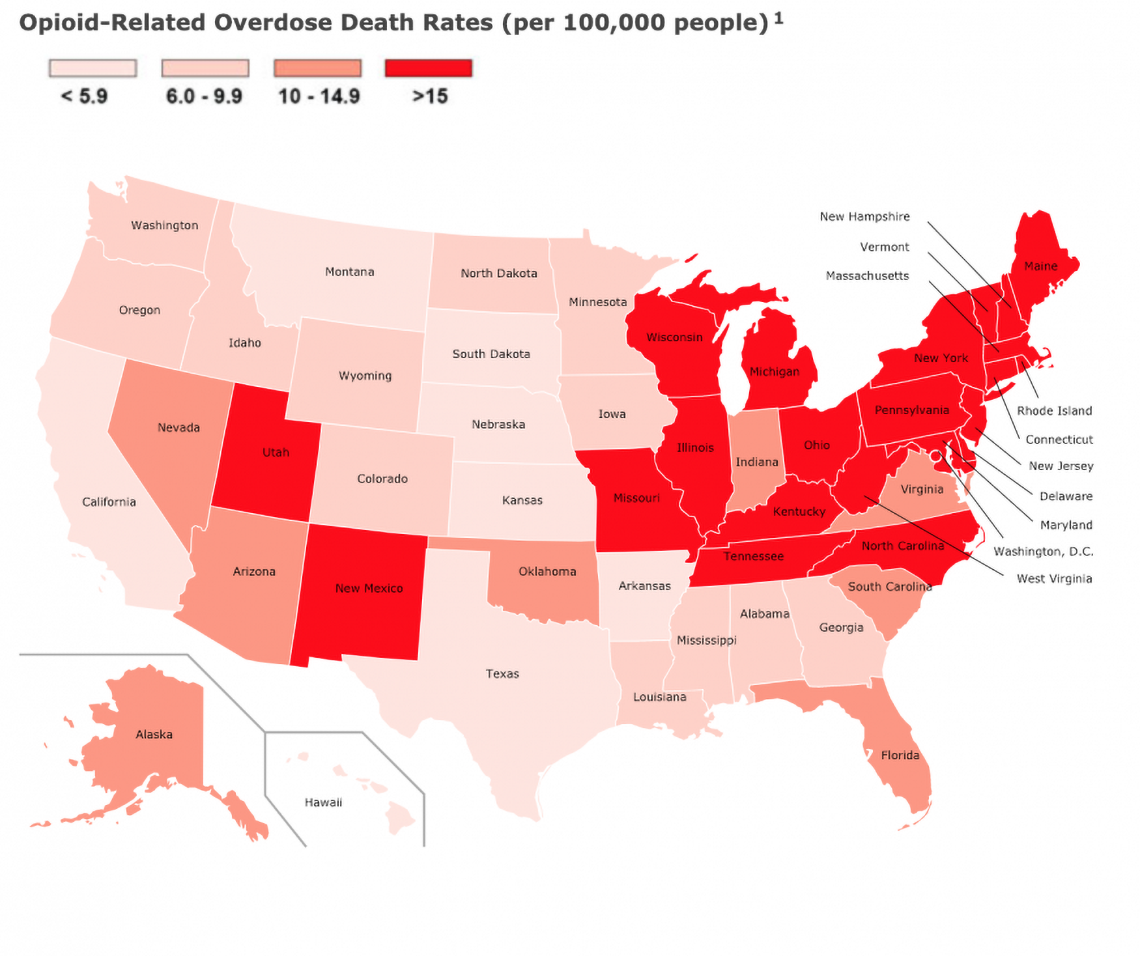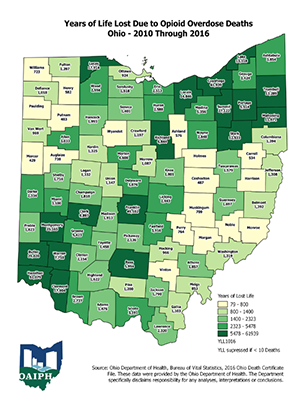
In 2010, Ohio became the state with fourth highest rate of overdoses in the US, a title which it defended until becoming number three in 2016 and number two the following year.1 While victims increase in number, they decrease in age. This past year the population of Ohio lost a collective 500,000 years.2 This trend is prominent in the northeast, a region of Ohio hit so hard by the opioid epidemic that funeral home revenues are reported to have spiked.3 However, a small community hospital in Summit County is fighting back.

Summa Barberton hospital emergency room has started a pilot program that provides medication assisted treatment (MAT) as well as social support services to IV drug users after an overdose. MAT for opioid usually consists of some combination of buprenorphine and naloxone; its aim is to reduce drug cravings and begin the process of recovery for interested patients. The case, for Emergency department based MAT programs, is increasingly being made; according to Duber et al. “EDs will play an integral part in mitigating the human toll on many levels through screening and identification of patients at risk for opioid use.”4 The Summa Barberton emergency program is unique in the extent of its social-support and follow-up services made available to patients after MAT has been administered.5
With funding from United Way Community Health (an Akron based social services organization), Summa Health has recently hired a fulltime addiction coordinator to work in the Barberton emergency room during evening hours. Among other duties, the addiction coordinator ensures that interested patients walk out with more than a pamphlet describing their “options” (the standard of care in most emergency rooms). The patient receives a treatment plan and a scheduled follow-up appointment at a local rehabilitation clinic.5
In addition to the addiction coordinator, patients have access to around-the-clock on-call “recovery coaches”, who are themselves recovering addicts from Packard Institute (an Akron based rehabilitation center and recovery coach training center). These recovery coaches work one-on-one with patients one to provide them with the specific support they need which can range from accompanying them to appointments to reaching out to family members Recovery coaches have their own recovery coaches who continue to help them in the maintenance of their sobriety and patients who have achieved sobriety through this program are encouraged to become recovery coaches themselves.5
Dave Rich the director United Way community health explains what makes this program so unique “This is a mix of the hospital, which is the highest level of care, partnering with legacy treatment agencies and grassroots groups like Packard,” he says. “This is the first time I’ve seen that many layers within one cause working together so closely. “The United way has given 500,000 dollars to this pilot program with the goal of expanding it to other Summa emergency departments as well as other hospitals and clinics in the area.5
References
- National Institute on Drug Abuse. “Opioid Summaries by State.” NIDA, National Institute on Drug Abuse, 28 Feb. 2018, www.drugabuse.gov/drugs-abuse/opioids/opioid-summaries-by-state.
- Cass, Andrew. “Ohio Lost over 500,000 Years of Life Due to Opioid Epidemic, Report Finds.” The News-Herald, The News-Herald, 12 July 2018, www.news-herald.com/news/ohio/ohio-lost-over-years-of-life-due-to-opioid-epidemic/article_bea199e1-566a-5ab5-a9c0-1a73fdaaaea3.html.
- Wiley, Frank. “Opioid Epidemic Leads to Boom for Funeral Homes.” newsnet5, 25 Aug. 2018, www.news5cleveland.com/news/local-news/akron-canton-news/funeral-homes-see-spike-in-business-from-ohios-opioid-epidemic.
- Duber, H. C., Barata, I. A., Cioè-Peña, E., Liang, S. Y., Ketcham, E., Macias-Konstantopoulos, W., … Whiteside, L. K. (2018). Identification, Management, and Transition of Care for Patients With Opioid Use Disorder in the Emergency Department. Annals of Emergency Medicine, 72(4), 420–431. https://doi.org/10.1016/j.annemergmed.2018.04.007
- Lin-Fisher, Betty. “New Pilot Program at Summa Barberton ER to Offer Help to Those Fighting Opioid, Other Addictions.” Www.ohio.com, Akron Beacon Journal, 14 June 2018, www.ohio.com/news/20180614/new-pilot-program-at-summa-barberton-er-to-offer-help-to-those-fighting-opioid-other-addictions.
- More than 500,000 years of life expectancy of Ohioans lost due to OD deaths. (n.d.). Retrieved January 15, 2019, from https://www.ohiopopulationhealthalliance.com/all-news/more-than-500-000-years-of-life-expectancy-of-ohioans-lost-due-to-od-deaths
Rebecca Siegel, is a research fellow in the GWU Department of Emergency Medicine and a medical student at Ben Gurion University in Israel.